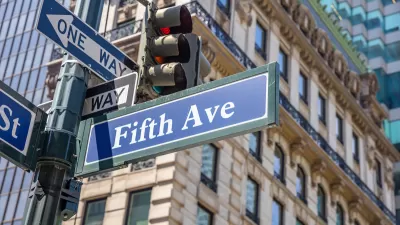There's no shortage of writing and conjecture on New York City when it comes to urban and city issues. But one subject that has been neglected in the urban academic discourse is the city's incredible concentration of beautiful women. It's amazing. It's like you can't avoid them, not that you'd want to. Walking down the street in New York City is like walking down a fashion runway. With cross traffic. And no security guards trying to tackle you.
There's no shortage of writing and conjecture on New York City when it comes to urban and city issues. But one subject that has been neglected in the urban academic discourse is the city's incredible concentration of beautiful women.
It's amazing. It's like you can't avoid them, not that you'd want to. Walking down the street in New York City is like walking down a fashion runway. With cross traffic. And no security guards trying to tackle you.
I've been to the city a number of times and while it is great and everything, there's no need to gush over it as so many have and so many will in these sorts of discussions about urban areas. But I think it's important to illuminate this aspect of the city that I've definitely noticed, which for purely academic purposes I'll call the city beauty quotient. And I'm not alone. My buddies have noticed it in their travels as well – and these guys are not planners or "urbanists" or academics or whatever we'd like to call ourselves. They are simply my bros. But they're also users of the city – the users planners and theoreticians aim to serve.
I've had conversations with these users of the city after they return from trips to New York, and they typically marvel at what I too have marveled at. I mean, these women are everywhere. I'm no creeper, and I'm not just in the city to gawk at women, but it's hard for me and my equally not-creepy friends to ignore the fact that we see an awesomely high volume of beautiful women walking around New York City.
But there's the key. When you walk around in New York City, you see beautiful girls (or guys, if that's your thing) doing exactly what you're doing: walking.
New York City, as a specific place, doesn't really have anything to do with the high city beauty quotient. It's actually a result of what kind of city it is. New York City happens to be a very walkable place, and because of this, people can walk around to serve their needs. Density, transit, jobs and other important factors play into this, but at its core, New York City is a city where people walk.
And because we're all walking in New York City, there's a greater chance that we're going to see each other. And if a girl walking happens to be gorgeous, there's a greater chance that I'll be able to see just how gorgeous she is. And what a wonderful world it will be.
So it only seems that there are more beautiful girls in New York City, but the truth is that there are just more beautiful girls seen.
Other cities probably have just as many beautiful women (proportionally), but they simply go unnoticed. In L.A., for instance, beautiful women are all over the place, but they're in cars driving 20 miles per hour on the freeway, leaving little chance of them actually crossing paths with other strangers in the public realm. Because this chance is so small, L.A.'s city beauty quotient suffers. It's the same story in any other auto-oriented place, whether in the rural Midwest or in the urban heart of the Sunbelt. There probably are a lot of beautiful women in these places, but you're not likely to cross paths with too many of them face to face. So this prompts the question: If nobody sees them, are they even there?
The answer, of course, is yes. They are there. They just need a chance to be seen to prove it. In New York City, they have that chance, and, boy, are they seen. They're seen enough to give the false impression that they're only in New York City. But they're not. They're everywhere – just not walking. But if they were and you were, well, maybe you'd run into each other.
If this isn't justification enough for creating more walkable cities, I don't know what possibly could be.

Maui's Vacation Rental Debate Turns Ugly
Verbal attacks, misinformation campaigns and fistfights plague a high-stakes debate to convert thousands of vacation rentals into long-term housing.

Planetizen Federal Action Tracker
A weekly monitor of how Trump’s orders and actions are impacting planners and planning in America.

In Urban Planning, AI Prompting Could be the New Design Thinking
Creativity has long been key to great urban design. What if we see AI as our new creative partner?

Portland Raises Parking Fees to Pay for Street Maintenance
The city is struggling to bridge a massive budget gap at the Bureau of Transportation, which largely depleted its reserves during the Civd-19 pandemic.

Spokane Mayor Introduces Housing Reforms Package
Mayor Lisa Brown’s proposals include deferring or waiving some development fees to encourage more affordable housing development.

Houston Mayor Kills Another Bike Lane
The mayor rejected a proposed bike lane in the Montrose district in keeping with his pledge to maintain car lanes.
Urban Design for Planners 1: Software Tools
This six-course series explores essential urban design concepts using open source software and equips planners with the tools they need to participate fully in the urban design process.
Planning for Universal Design
Learn the tools for implementing Universal Design in planning regulations.
Gallatin County Department of Planning & Community Development
Heyer Gruel & Associates PA
JM Goldson LLC
City of Camden Redevelopment Agency
City of Astoria
Transportation Research & Education Center (TREC) at Portland State University
Jefferson Parish Government
Camden Redevelopment Agency
City of Claremont





























